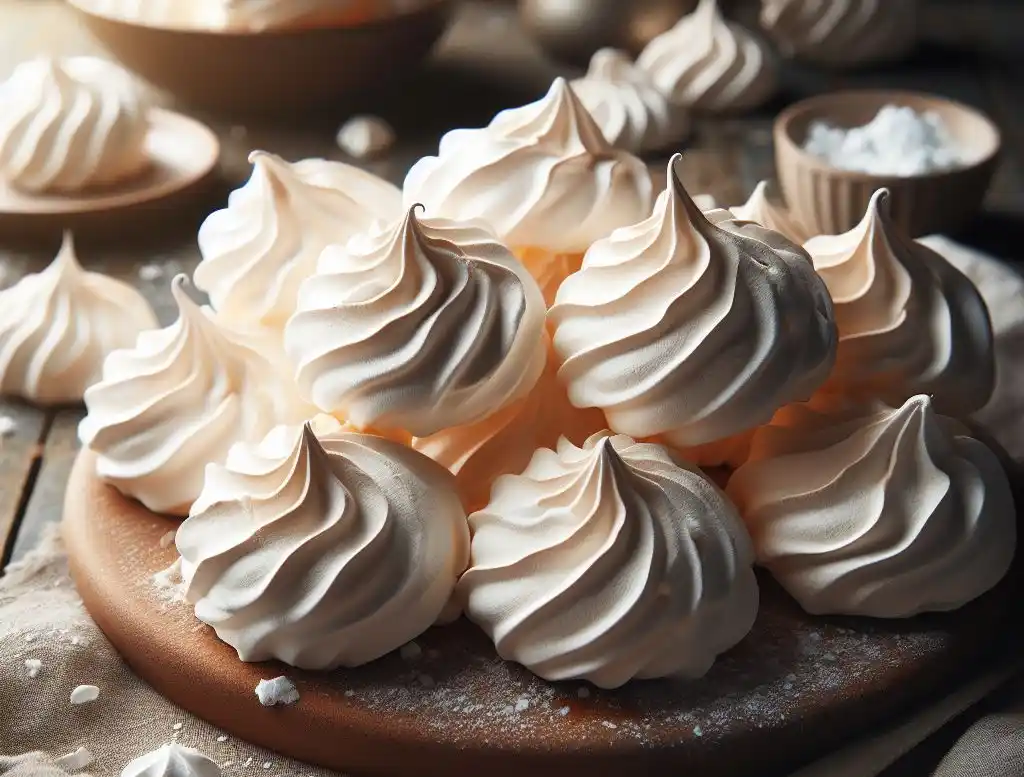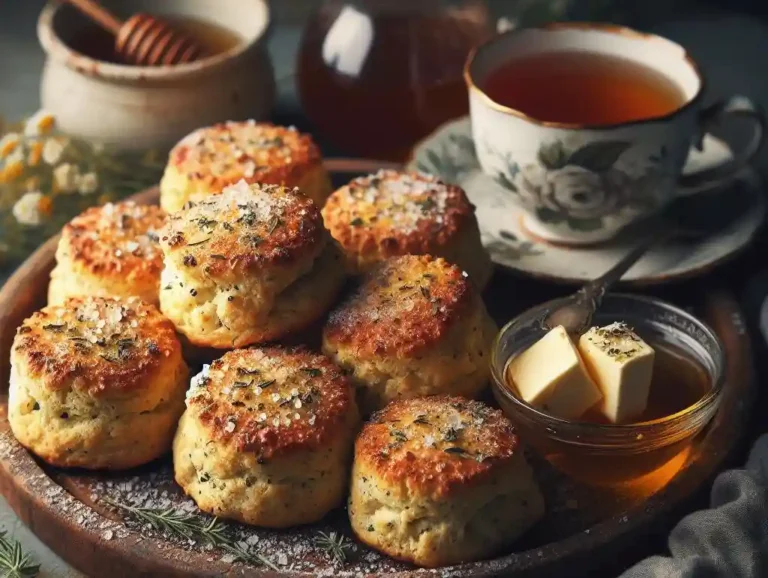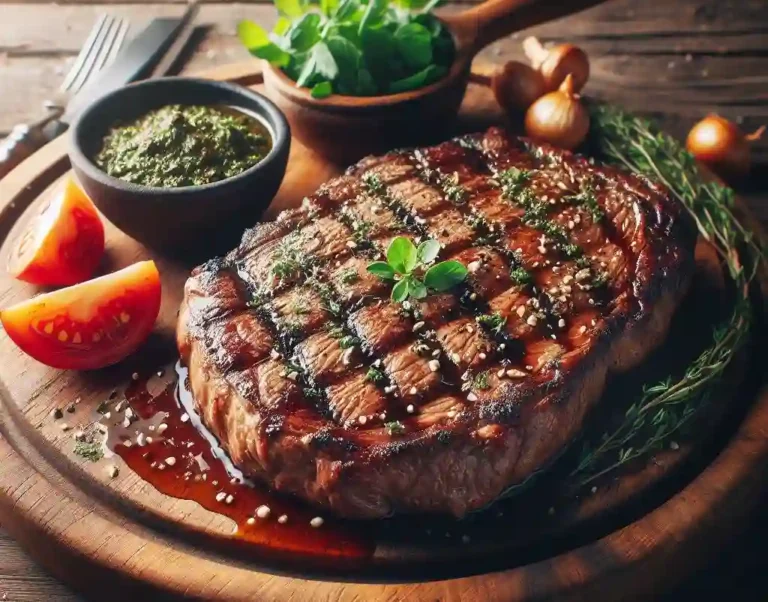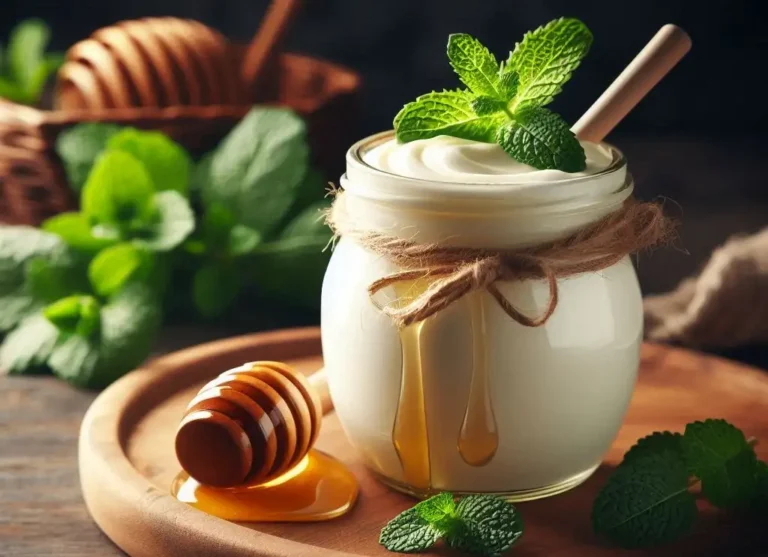How to Make Meringue Without Cream of Tartar: A Quick and Easy Recipe
In this post, we’ll explore the secrets to making meringue without cream of tartar and provide a simple recipe and tips to get you started.
Meringue – the sweet, fluffy, and oh-so-delicate dessert topping that adds a touch of elegance to any cake, pie, or cookie.
While cream of tartar is a common ingredient in many meringue recipes, it’s not the only way to achieve a light, airy, and delicious meringue.
How to Make Meringue Without Cream of Tartar: A Quick Overview
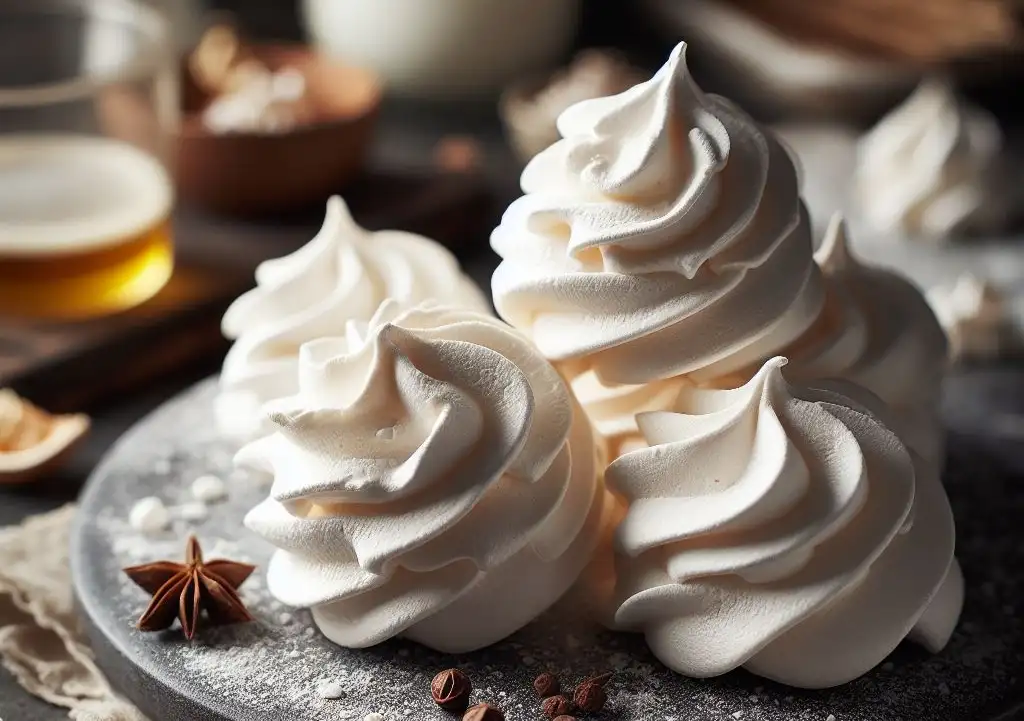
What You’ll Need:
- 3 large egg whites
- 1 cup granulated sugar
- 1/2 teaspoon salt
- 1/2 teaspoon lemon juice or vinegar
- Flavorings such as vanilla extract or almond extract (optional)
The Process:
- In a clean, dry bowl, beat the egg whites and salt until soft peaks form.
- Gradually add the sugar to the egg whites, beating continuously until stiff peaks form.
- Add the lemon juice or vinegar and beat until well combined.
- Add any desired flavourings and beat until well combined.
- Use the meringue immediately, or store it in an airtight container in the refrigerator for up to 2 days.
Tips and Variations:
- Use a copper bowl to help stabilize the egg whites and improve the meringue’s texture.
- Add a pinch of cream of tartar substitutes, such as lemon juice or vinegar, to help stabilize the egg whites.
- Use a higher sugar ratio to egg whites for a more stable meringue.
- Add flavourings such as nuts, chocolate chips, or fruit to create different flavour combinations.
- Experiment with different types of sugar, such as brown sugar or turbinado sugar, for a different flavor.
Troubleshooting:
- If the meringue is too runny, refrigerate it for about 10 minutes to firm it up.
- If the meringue is too stiff, beat in a little more egg white to loosen it up.
- If the meringue collapses, start again with a clean bowl and beaters to prevent contamination.
The Importance of Stabilizers in Meringue Making
Why Stabilizers are Crucial in Meringue Making:
- Prevents Weeping: Stabilizers help to prevent meringues from weeping or becoming too runny, which can occur when the meringue is exposed to humidity or heat.
- Maintains Structure: Stabilizers help to maintain the structure and texture of the meringue, ensuring it remains light, airy, and crisp.
- Enhances Stability: Stabilizers enhance the stability of the meringue, allowing it to hold its shape and prevent collapse or shrinkage.
- Reduces Sugar Crystallization: Stabilizers inhibit sugar crystallization, which can cause the meringue to become grainy or crystalline.
- Improves Shelf Life: Stabilizers help extend meringue’s shelf life by preventing the growth of bacteria and mold.
- Enhances Flavor: Some stabilizers, such as cream of tartar, can also enhance the flavour of the meringue by reducing the bitterness of the egg whites.
Common Stabilizers Used in Meringue Making:
- Cream of Tartar
- Cornstarch
- Gelatin
- Agar Agar
- Guar Gum
- Xanthan Gum
What to Use Instead of Cream of Tartar
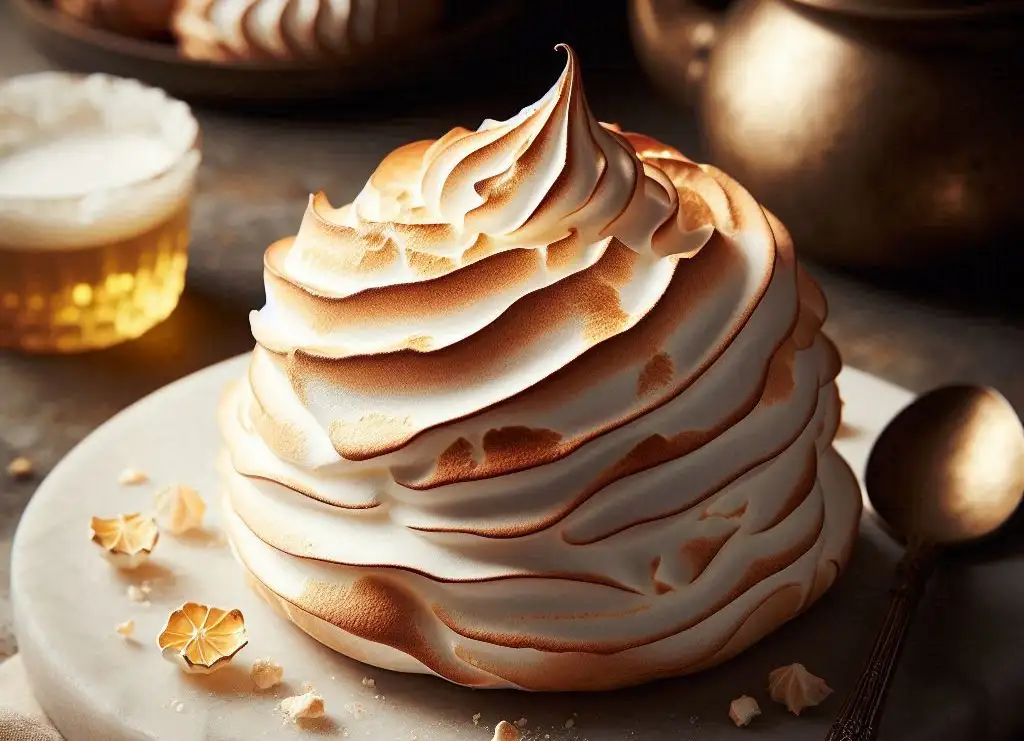
Alternatives to Cream of Tartar:
- Lemon Juice or Vinegar: Add a squeeze of fresh lemon juice or a splash of vinegar (about 1/2 teaspoon) to the egg whites to help stabilize the meringue.
- Salt: Use a pinch of salt (about 1/4 teaspoon) to help strengthen the egg whites and improve the meringue’s texture.
- Baking Soda: Add a small amount of baking soda (about 1/4 teaspoon) to the egg whites to help stabilize the meringue and reduce the risk of weeping.
- Gelatin: Unflavored gelatin can be used as a stabilizer in meringue making. Use about 1 tablespoon of gelatin per 2 large egg whites.
- Agar Agar: This vegan alternative to gelatin can be used to stabilize meringues. Use about 1 tablespoon of agar agar powder per 2 large egg whites.
- Xanthan Gum: This natural thickening agent can help stabilize meringues. Use about 1/4 teaspoon of xanthan gum per 2 large egg whites.
- Guar Gum: Similar to xanthan gum, guar gum can help stabilize meringues. Use about 1/4 teaspoon of guar gum per 2 large egg whites.
Important Notes:
- When substituting cream of tartar, you may need to adjust the amount of sugar in your recipe, as some alternatives can affect the sweetness of the meringue.
- Some alternatives may affect the flavor or texture of the meringue, so you may need to experiment with different options to find the one that works best for you.
Understanding the Role of Acid in Meringue Making
The Importance of Acid in Meringue Making:
- Stabilizes Egg Whites: Acid helps to stabilize the egg whites, allowing them to hold air and maintain their structure.
- Reduces pH: Acid lowers the pH of the egg whites, which helps to:
‣ Denature proteins, making them more stable and less likely to weep or collapse
‣ Inhibit the growth of bacteria and mold
‣ Improve the overall texture and stability of the meringue
- Enhances Whipability: Acid helps to strengthen the egg whites, making them easier to whip and increasing their ability to hold air.
- Improves Sugar Dissolution: Acid helps to dissolve sugar more efficiently, reducing the risk of sugar crystallization and promoting a smooth, glossy finish.
- Balances Flavor: Acid can help balance the flavor of the meringue, reducing the sweetness and adding a tangy or fruity note.
Common Acids Used in Meringue Making:
- Cream of Tartar: A traditional acid used in meringue making, cream of tartar helps to stabilize egg whites and improve their whipability.
- Lemon Juice or Zest: Adding a squeeze of fresh lemon juice or some grated lemon zest can provide a burst of citrus flavor and help stabilize the egg whites.
- Vinegar: A small amount of vinegar can be used to lower the pH of the egg whites and improve their stability.
- Citric Acid: A natural preservative, citric acid can be used to stabilize the egg whites and extend the shelf life of the meringue.
Tips and Variations:
- Start with a small amount: Begin with a small amount of acid (about 1/4 teaspoon) and adjust to taste.
- Combine acids: Experiment with combining different acids, such as cream of tartar and lemon juice, to create a unique flavor profile.
- Adjust for flavor: Balance the acidity level to suit your desired flavor profile, from tangy to sweet.
The Science Behind Meringue Formation
Protein Structure:
- Egg Whites: Egg whites contain approximately 90% water and 10% protein (mainly ovotransferrin and ovomucoid).
- Denaturation: When egg whites are whipped, the proteins unfold and reorganize, creating a network of strands that trap air bubbles.
Air Incorporation:
- Surface Tension: The surface tension of the egg whites allows them to stretch and form a thin film around the air bubbles.
- Air Bubble Formation: As the egg whites are whipped, air bubbles are incorporated, and the protein network traps them, creating a stable foam.
Stabilization:
- Hydrogen Bonds: Hydrogen bonds between the protein molecules help to stabilize the foam structure.
- Disulfide Bonds: Disulfide bonds between the cysteine residues in the proteins also contribute to the stability of the foam.
Sugar’s Role:
- Hydrogen Bonding: Sugar molecules participate in hydrogen bonding with the protein molecules, helping to strengthen the foam structure.
- Crystallization Inhibition: Sugar inhibits the crystallization of water, which helps to maintain the stability of the foam.
Whipping and Aeration:
- Whipping: Whipping introduces air into the egg whites, creating a network of air bubbles.
- Aeration: Aeration helps to incorporate air and increase the volume of the meringue.
Heat and Drying:
- Evaporation: Heat causes the water in the meringue to evaporate, concentrating the sugar and protein solutions.
- Drying: As the meringue dries, the protein network becomes more rigid, and the sugar crystallizes, creating a crispy exterior and a chewy interior.
A Simple Recipe for Cream of Tartar-Free Meringue
Cream of Tartar-Free Meringue Recipe:
Ingredients:
- 3 large egg whites
- 1 cup (200g) granulated sugar
- 1/2 teaspoon salt
- 1/2 teaspoon lemon juice or vinegar (optional)
Instructions:
- Preheat: Preheat the oven to 200°F (90°C) with a rack in the middle.
- Prepare the Egg Whites:
- In a clean, dry bowl, beat the egg whites and salt until frothy.
- Add the lemon juice or vinegar (if using) and continue beating until stiff peaks form.
- Gradually Add Sugar:
- Gradually add the sugar to the egg whites, beating continuously until stiff peaks form.
- Beat for an additional 2-3 minutes to ensure the sugar is fully dissolved.
- Check Consistency:
- Stop beating when the meringue is smooth, glossy, and holds its shape.
- Pipe or Spoon:
- Pipe or spoon the meringue onto a parchment-lined baking sheet.
- Bake:
- Bake for 1 1/2 to 2 hours, or until the meringues are dry and crisp.
- Cool:
- Allow the meringues to cool completely on the baking sheet before storing in an airtight container.
Tips and Variations:
- Use Fresh Eggs: Fresh eggs will result in a more stable meringue.
- Avoid Overmixing: Stop beating once the meringue is smooth and glossy to prevent overmixing.
- Add Flavorings: Experiment with different flavorings, such as extracts (e.g., almond, vanilla), citrus zest, or cocoa powder.
- Color Your Meringues: Add a few drops of food coloring to create colored meringues.
Tips for Whipping Egg Whites to Perfection
- Room Temperature Egg Whites: Make sure your egg whites are at room temperature before whipping. This will help them whip up to their fullest potential.
- Clean and Dry Equipment: Use a clean and dry bowl and beaters to whip your egg whites. Any residual fat or moisture can prevent the egg whites from whipping up properly.
- Start with a Slow Speed: Begin whipping your egg whites on a slow speed to incorporate air and break down the protein bonds. Gradually increase the speed as the egg whites become frothy.
- Add Acid (Optional): Adding a pinch of cream of tartar or a squeeze of lemon juice can help stabilize the egg whites and improve their whipping performance.
- Whip in a Cool Environment: Whip your egg whites in a cool, draft-free environment to prevent them from becoming too warm and separating.
- Don’t Over-Whip: Stop whipping your egg whites when they reach the desired consistency. Over-whipping can cause them to become too stiff and separate.
- Use the Right Whisk: Use a whisk or beater that is designed for whipping egg whites. A balloon whisk or a stand mixer with a wire whip attachment are ideal.
- Don’t Over-Beat: Avoid over-beating your egg whites, as this can cause them to become too stiff and separate.
- Check Consistency: Check the consistency of your whipped egg whites regularly to avoid over-whipping. Stop whipping when they reach the desired consistency.
- Practice Makes Perfect: Whipping egg whites is an art that requires practice. Don’t be discouraged if your first attempts don’t turn out perfectly. Keep practicing, and you’ll soon become a pro!
How to Achieve the Perfect Meringue Texture
Achieving the Perfect Meringue Texture:
- Stiff Peaks: Whip the egg whites until they form stiff peaks that hold their shape. This indicates that the meringue is ready to be baked.
- Glossy Appearance: A perfect meringue should have a glossy, smooth appearance. If the meringue is dull or matte, it may be overcooked or undercooked.
- Crisp Exterior: A good meringue should have a crisp, dry exterior that snaps when broken. This indicates that the meringue is fully cooked and dry.
- Chewy Interior: The interior of the meringue should be chewy and soft, but not too sticky or wet.
- No Weeping: A perfect meringue should not weep or release liquid when broken. This indicates that the meringue is fully cooked and dry.
- No Cracks: A good meringue should not have any cracks or fissures on the surface. This indicates that the meringue is fully cooked and dry.
- Even Color: The meringue should have an even, uniform color. If the meringue is unevenly colored, it may be overcooked or undercooked.
- No Sogginess: A perfect meringue should not be soggy or soft to the touch. This indicates that the meringue is fully cooked and dry.
- Perfect Texture: The perfect meringue texture is crispy on the outside and chewy on the inside. It should be light, airy, and have a delicate texture.
FAQs
Q: What is the difference between a meringue and a macaron?
A: A meringue is a type of sweet treat made from whipped egg whites and sugar, while a macaron is a type of French cookie that consists of two meringue-based cookies sandwiched together with a filling.
Q: Can I make meringues in a humid climate?
A: Yes, but it may be more challenging. Humidity can affect the texture and stability of meringues, making them more prone to weeping or becoming too soft. To combat this, you can try using a dehumidifier or adjusting the recipe to include more sugar or stabilizers.
Q: Why do my meringues always weep or become too soft?
A: There are several reasons why meringues may weep or become too soft, including overmixing, underbaking, or high humidity. To prevent this, make sure to whip the egg whites until they are stiff and hold their shape, and bake the meringues at the correct temperature and time.
Q: Can I add flavorings or colorings to my meringues?
A: Yes! You can add flavorings like extracts (e.g., almond, vanilla), oils (e.g., peppermint, lemon), or spices (e.g., cinnamon, nutmeg) to your meringue mixture. You can also add a few drops of food coloring to tint the meringues.
Q: How do I store meringues?
A: Meringues are best stored in an airtight container in a cool, dry place. You can also freeze them for up to 2 months and thaw them at room temperature when needed.
Q: Can I make meringues ahead of time?
A: Yes, you can make meringues ahead of time, but it’s best to bake them just before serving for optimal texture and freshness. If you need to make them ahead of time, store them in an airtight container and bake them just before serving.

Amelia Winthrop is the creative force behind Skillful Cooking, a blog that serves as a canvas for her culinary creations. With a philosophy that cooking should be accessible and enjoyable, Amelia crafts recipes that blend simplicity with sophistication. Her intuitive approach to the kitchen encourages others to embrace the joy of cooking and the pleasure of sharing meals with loved ones.

